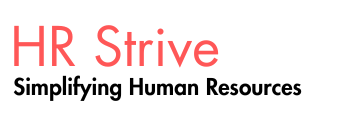Improving Organizational Performance
Improving how an organization performs often means realigning its structure, roles, processes, and culture so they support new strategic goals. When these elements are out of sync, even the best strategy struggles to take off.
Competency Connection
Imagine an organization pursuing growth through a merger or acquisition. HR has already done its due diligence on a potential company that senior leaders are very eager to acquire, mainly because it would help strengthen their long-term vertical strategy.
As the CHRO reviews the data gathered by an HR task force, several important competencies come to life. Most of the early findings are financial—information about workforce demographics, costs, and contractual obligations. Here, Business Acumen and Analytical Aptitude help the CHRO understand what those numbers really mean.
But the CHRO also notices some cultural signals. A Global Mindset helps them see that the target company operates in a very hierarchical way. Decisions require multiple layers of approval, communication is formal, and conflict resolution is highly structured. This stands in sharp contrast to the CHRO’s own organization, where autonomy and innovation are encouraged. These differences could lead to misalignment in culture, employee relations, and even skill requirements—issues that will matter long after the merger paperwork is signed.
Using strong Consultation skills, the CHRO presents these findings to senior management, highlighting not only the financial implications but also the cultural and strategic risks that could shape the success of the merger.
Organizational Interventions
Organizational interventions look at whether the structure of an organization is helping—or holding back—its strategic goals. Structure refers to how work is grouped and how the pieces connect.
Interventions are especially important when an organization:
-
Is no longer meeting strategic goals because its structure has become ineffective or outdated—this is common as organizations grow.
-
Has shifted its competitive strategy and now needs new capabilities, such as faster decision-making or greater adaptability.
Redesigning the Organization
Organizational design includes everything that supports how a company functions. This goes beyond structure and also includes:
All of these elements work together as one interconnected system. Any redesign must respect that interdependence.
HR’s Role in Organizational Design
HR plays a key role in shaping how an organization is designed. This includes:
-
Diagnosing what's causing performance issues
-
Helping leaders explore clear design options
-
Ensuring decisions align with both short- and long-term strategy
-
Guiding leaders in understanding their responsibilities during implementation
-
Monitoring whether the structure continues to support the company’s strategy
-
Securing the right internal or external expertise to support development
Structural Characteristics in Organizational Design
Work Specialization
This refers to how much work is broken into specific jobs. Specialization can improve efficiency but can also lead to siloed thinking, boredom, and reduced innovation—especially in complex, tech-driven organizations.
Decision-Making Authority
Organizations must decide where decisions get made—centrally at headquarters or more locally at the operational level. Empowering the right level ensures fast and effective decisions.
Layers of Hierarchy
Modern organizations tend to flatten their structures to eliminate unnecessary layers and increase agility. Two concepts matter here:
As organizations evolve—especially those using matrix structures—traditional chains of command may look more like networks than vertical ladders.
Formalization
This refers to how much rules and procedures shape behavior. While formalization offers consistency and control, too much of it can limit creativity and responsiveness. Culture heavily influences how formal or flexible an organization can be.
Departmentalization and Common Structures
Organizations group work in different ways:
Functional Structure
Teams are grouped by specialization—like marketing, finance, HR, or operations. It’s simple and efficient but may create silos.
Product or Customer Structure
Each product line or customer segment has its own division, complete with dedicated functions. This builds deep expertise but increases staffing needs.
Geographic Structure
Divisions are based on regions or countries. This allows better responsiveness to local needs but may reduce consistency across the organization.
Matrix Structure
Employees report to two managers—typically a functional manager and a project or program manager. This fosters collaboration and agility but can also create confusion if not well managed.
Aligning Roles and Responsibilities
Highly integrated structures can fail when roles and communication paths aren’t clear. Tools like RACI charts help define:
-
Responsible — who does the work
-
Accountable — who owns the outcome
-
Consulted — who provides input
-
Informed — who needs updates
Clarifying these roles is essential during restructuring or when new processes are introduced.
